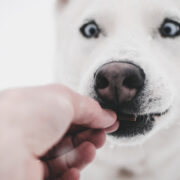Everyone remembers those awkward days in middle school and high school when you had a pimple, and it seemed like everyone noticed! But what about your best canine friend? Can dogs get pimples?
As it turns out, dogs can get pimples just like humans get them. The reasons why they get them, however, are not always the same. Hormonal changes in adolescence cause human acne, but acne in dogs has a different cause.
You might also remember those awkward trips to the drugstore looking for zit creams like benzoyl peroxide to help clear your acne, but those are not necessarily the best cure for your pooch.
To really understand dog acne, we have to look at the reasons why your canine buddy gets zits, and then we can talk about the best treatment options.
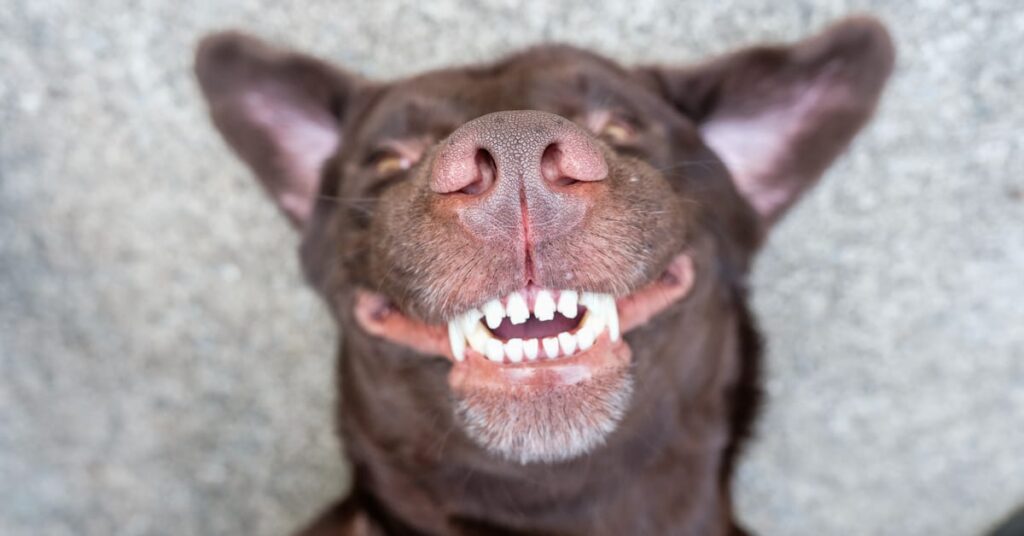
What Causes Dog Pimples?
A dog’s hair follicles, or fur follicles if you prefer, are similar to human hair follicles in that they have sebaceous glands. These glands produce a type of oil called sebum. The main function of sebum is to protect the hair and skin, but when the gland clogs by dead skin cells, dirt, bacteria, or excess oil, the sebum can’t be secreted like it normally would be.
Instead, it collects in the gland and forms a pustule lesion, also known as a pimple. This pimple can be a whitehead, blackhead, or enclosed pimple similar to what humans get.
The difference between these types of pimples is simply the degree to which the hair follicle is clogged and exactly how deep that clog is in your dog’s skin.
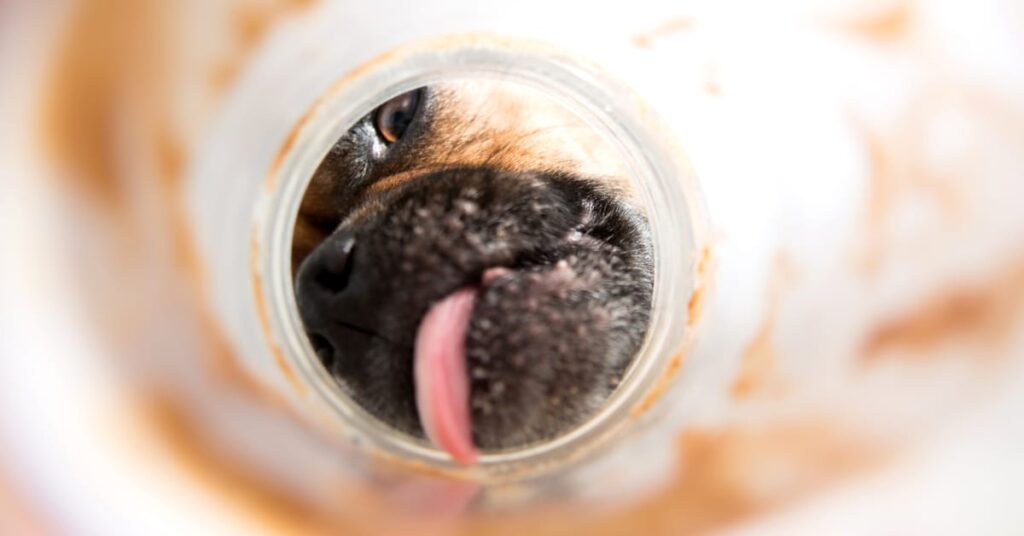
Where Do Dogs Get Pimples and Why?
You’re most likely to see a break out of pimples on your dog’s face, chest, or genital area. These can appear as red bumps around your dog’s mouth or on other areas of his skin.
Hormonal changes can contribute to dog acne, but it’s not the most common cause.
Age and Hormonal Changes
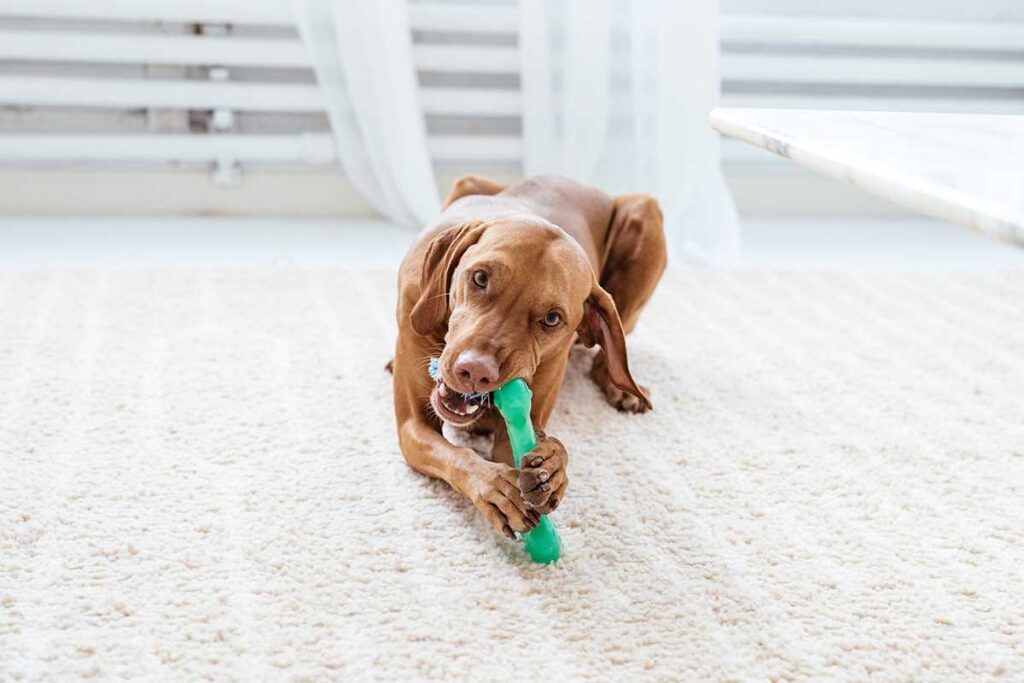
Acne in dogs can be caused by their own puberty phase. This occurs around five to eight months old in dogs, and so, by the time your dog is around a year old, his pimple problem should go away.
If it persists after that time, you may want to consider taking him to the veterinarian to make sure it’s not a more serious issue with your dog’s health.
Genetic Predisposition
Genetic predisposition is one big cause, and this is shown by the fact that some breeds get pimples more often than other breeds.
The dog breeds that have breakouts of canine acne more frequently than other breeds include Great Danes, Boxers, Rottweilers, Doberman Pinschers, and English bulldogs.
Poor Hygiene
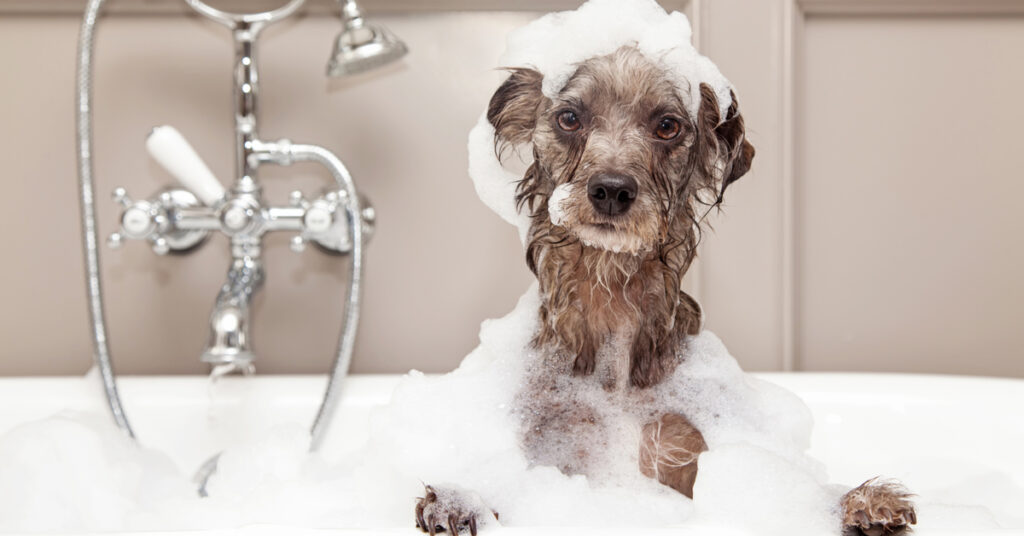
Your dog’s genetic predisposition, however, is not the only cause of dog pimples. Poor hygiene is another underlying cause of dog acne. Dirt can clog your dog’s pores and cause what is effectively a bacterial infection. That’s why it’s important to keep your dog clean, especially in the regions most prone to have pimples.
You also want to make sure you use stainless steel or ceramic dog food and water bowls since plastic can more easily retain dirt and oil which can make your dog’s pimple problem worse.
You also want to practice good dental hygiene for your pup since poor dental hygiene can also result in pimples on your dog’s muzzle.
Just like with humans, managing dog acne is all about keeping everything as clean as possible.
Broken Hair Follicles
Another factor for why your pup may suffer from zits is trauma. When he’s wrestling around with another dog, it’s possible for his fur to break off near the base of the hair follicle. That can cause inflammation which also clogs the sebaceous gland and results in a pimple.
Dog Allergies
Another underlying cause of dog acne is a possible allergic reaction. Your dog can be allergic to different things just like you can. He might have a food allergy, a contact allergy, or he could have an allergic reaction to environmental factors too.
Most food allergies result from certain types of proteins like chicken or beef, but as with humans, there are many factors that can cause an allergic reaction in your dog.
Treatment Options for Your Pimply Pup
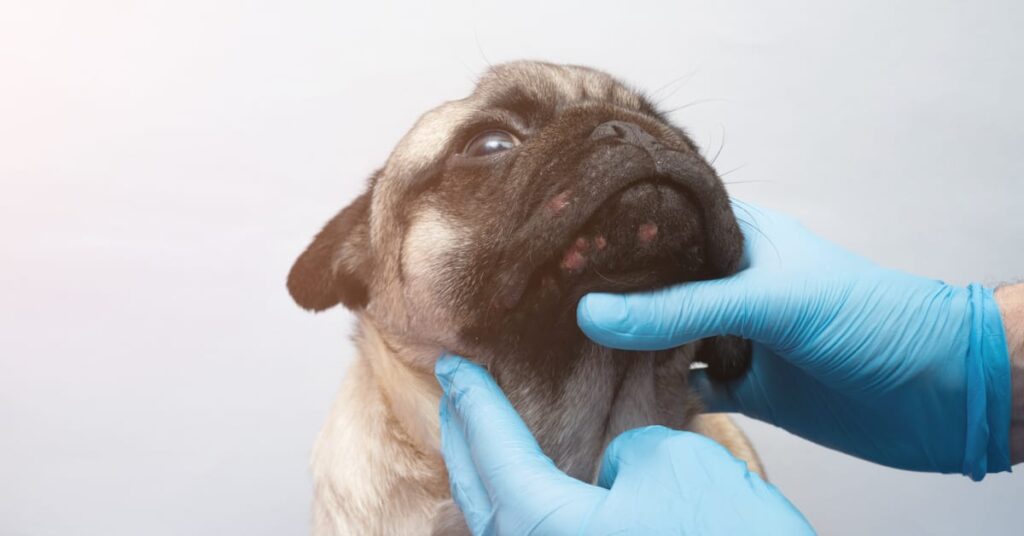
Okay, you’ve accepted that your pimply pup won’t be the belle of the ball at the canine prom, but what can you do to help treat his canine acne?
It’s important to treat it because severe cases of dog acne can lead to scabbing and even permanent scars.
As with most skin conditions your dog might have, you want to check with your DVM to make sure it’s not something more serious like mange or some other skin problem.
In mild cases of canine acne, your veterinarian can recommend topical creams or shampoos that can help. You don’t want to try these without consulting with your vet since common products humans use can be irritating to your dog’s skin.
In more severe cases of dog acne, your vet may want to treat the problem with something stronger like topical or oral antibiotics or topical steroids.
Don’t Pop Your Dog’s Pimples!
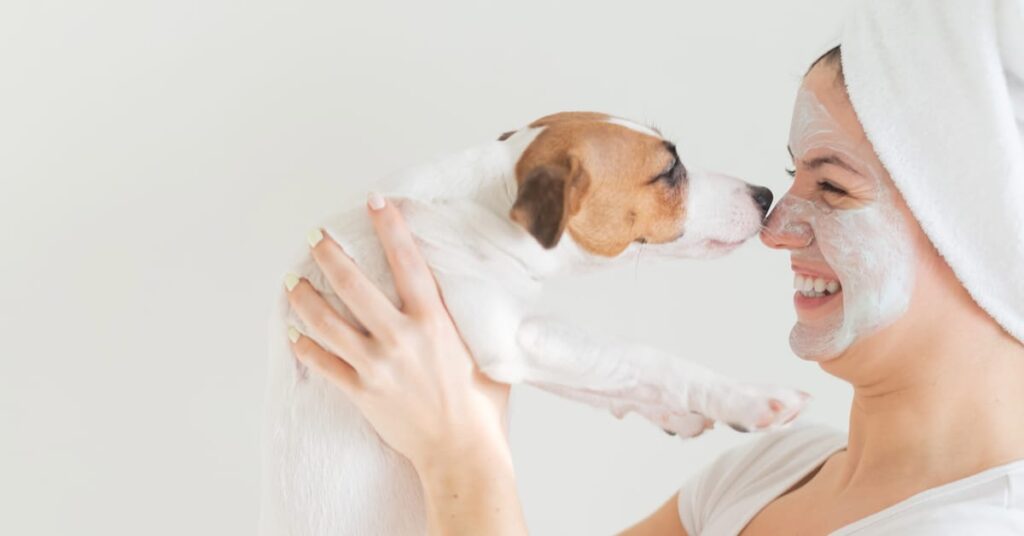
You may have heard the warning that you shouldn’t pop a zit, and that’s also true for your dog’s zits. Popping that pimple just isn’t a good acne treatment. It can cause even more inflammation in the area of the acne, and that can create even more pimples because it clogs the sebaceous glands.
As a good dog owner, don’t pop that zit, instead, keep your dog and his toys as clean as possible, maintain proper dental hygiene, switch out his plastic bowls, and be on the lookout for any indication your dog is having an allergic reaction to something in his environment.
If you notice your dog is getting pimples in a specific area, you might try to look there for the cause and eliminate it. It could be an allergic reaction to something, and if you reduce your dog’s exposure to that allergen, you can eliminate the problem.
For example, maybe you notice your dog is digging around in a certain part of the yard, and after he does that, you see an outbreak of zits on his face. Maybe you can keep him away from that area of the yard.
You can also try to look for specific allergens that could be triggering his pimple outbreak, but that’s really a hit or miss strategy since it could be so many different things.
Final Thoughts
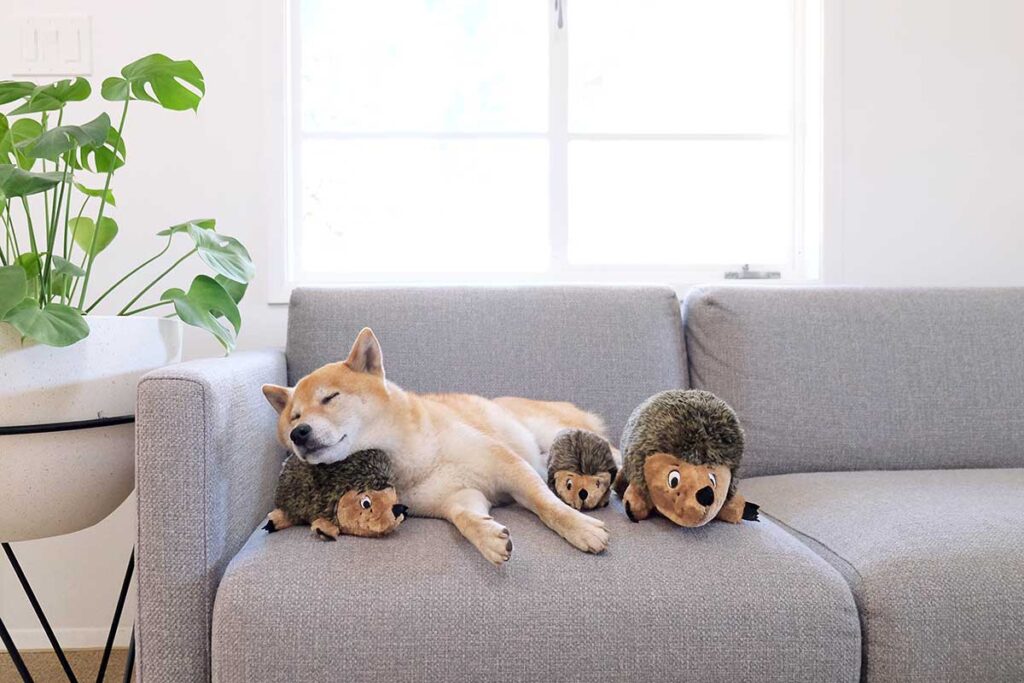
Nobody likes pimples, not even on your dog. They are, however, something that everyone, including your dog, has to deal with from time to time.
Whether they’re caused by hormonal changes in puberty or poor hygiene, they are a kind of bacterial infection that you want to take care of so that they don’t develop into anything more serious.
Mild cases are usually easily treated with creams or something like benzoyl peroxide, but more severe cases may require oral medication like antibiotics. You might also consider special shampoos or soaps to help keep your dog’s skin clean.
Just like with anything else related to your dog’s health, good dog owners want to get to the root of the problem and fix it so their best friend can be healthy and comfortable. He might not be the prom king, but at least he won’t have dog acne to scar his puberty!

